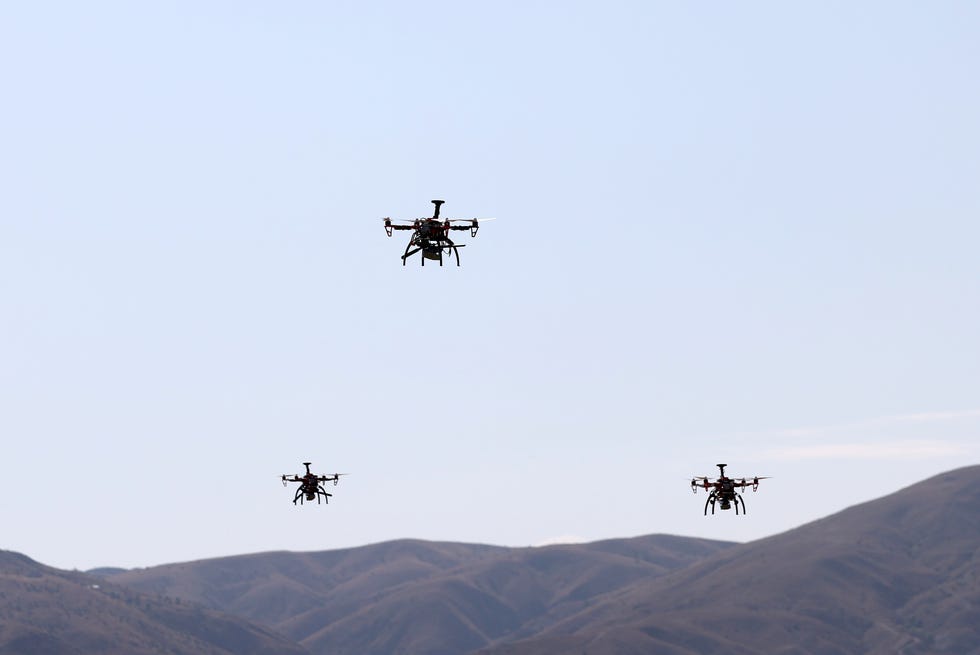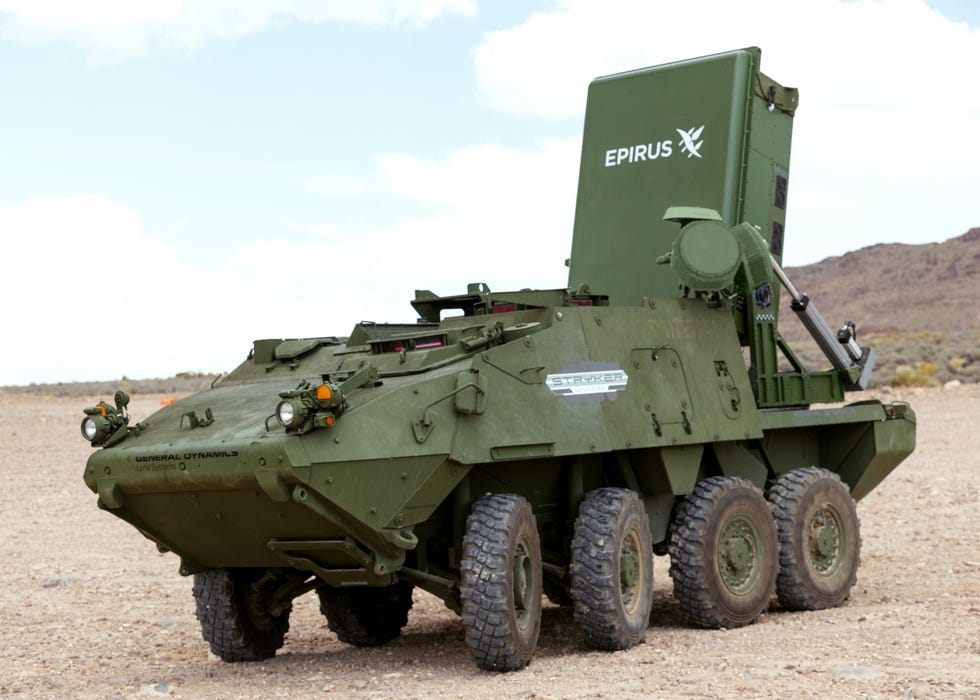
The U.S. Army has taken possession of its most promising anti-drone swarm technology yet, a new system that uses microwave radiation to disable drones, literally causing them to fall out the sky en masse. The system, based on Epirus’ Leonidas counter-drone system, sends out a wide beam capable of targeting several drones at once, decimating incoming swarms.
Defense contractor Epirus has delivered a prototype weapon known as Indirect Fire Protection Capability–High-Power Microwave (IFPC-HPM) to the U.S. Army. The Army’s Rapid Capabilities and Critical Technologies Office spearheaded the effort, which will result in Epirus delivering a total of four prototypes. The Army plans to test the systems extensively to mature the brand-new tech and determine its effectiveness against a wide variety of unmanned aerial systems.
The Swarming Threat
Unmanned vehicle technology, in the form of remote controlled or autonomous drones, has upended warfare on the tactical level. A quadcopter drone, equipped with a camera, can provide an agile reconnaissance platform for ground forces. The same drone, armed with a grenade or an anti-tank shaped charge, can bomb infantry hiding in trenches or even disable a 65 main battle tank.
The same drone also becomes nearly unstoppable when part of an AI-driven swarm, overwhelming even the most organized and well-equipped defenders. If an enemy force launches a 20-drone swarm and the defenders manage to shoot down 19, that seems like a successful defense. After all, not every defensive action destroys 95 percent of the attacking force. But if each of the drones costs $2,000, and the one drone that survives destroys a $4 million dollar tank, it’s actually a successful attack.
An Electromagnetic Flamethrower
The defense industry has responded to drones with a variety of solutions, mostly using existing weapons and modifying them for a short-range air defense role. Solutions have included using machine guns, small-caliber automatic cannon, missiles, or even lasers. The problem is, with the exception of automatic cannon using programmable airburst fuzes, each can only take out a single drone per shot.
An anti-drone weapon must detect one drone, track it, lock on to it, fire, and fire again if the weapon misses. It must repeat this process again and again, a time-consuming effort that means not every drone is engaged before the attackers start reaching their targets.


